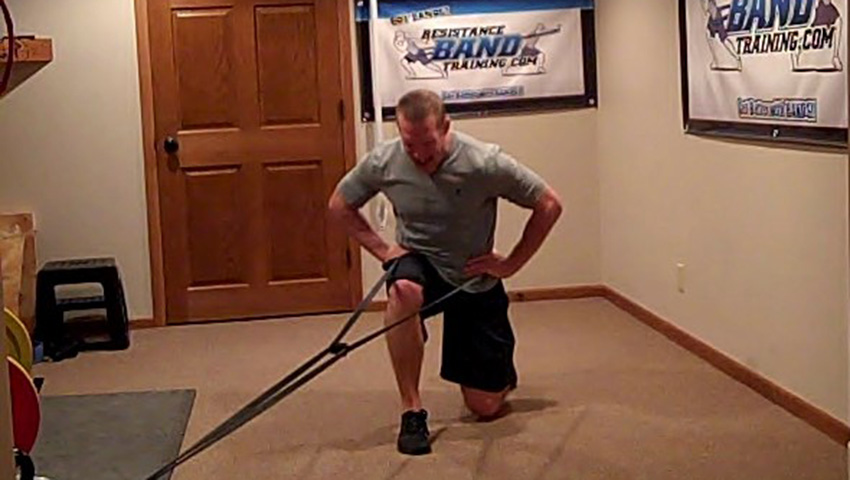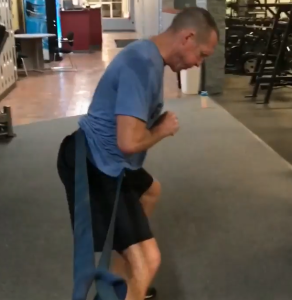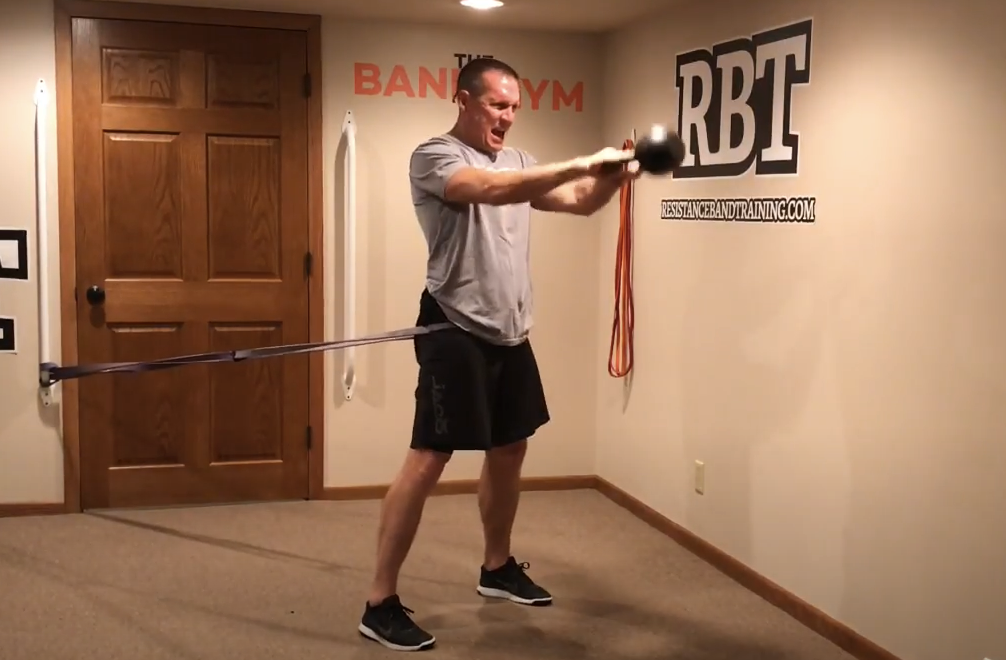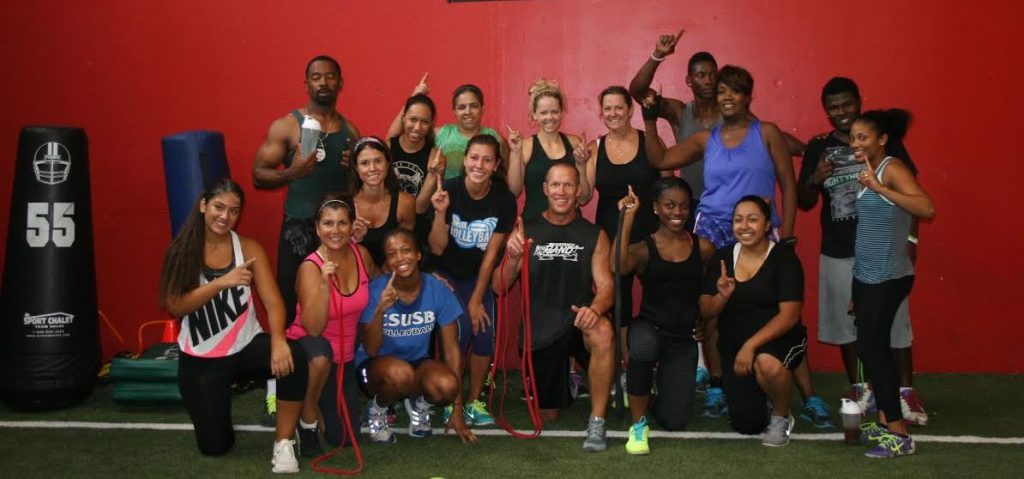When it comes to “long term” leg training success the key will be to protect the knees.
To accomplish “long term” leg training success will require building in several key elements into your weekly leg workouts. Let’s make sure you have all these key elements in your workouts.
Key Leg Training Elements to Add to Your Workouts
1. Keep the Soft Tissues Soft and Mobile
Everything starts with getting the tissue of the hip, thigh and calf soft and mobile. You know as we age our body’s myofascial (muscle covering) structures get tighter for several reasons. As a result, continual use of foam rolling and self-massaging to keep this soft tissue soft and mobile is going to be an important training element in keeping your legs and hips moving well.
I would recommend you foam roll your legs before every lower body or cardio-based workout. If you have areas that are very painful when rolling, like the IT-Band or outer side of the thigh, you may want to provide that area with some additional rolling time.
Key Areas to Hit Foam Rolling
2. Keep Your Hips Flexible
No lower body or cardio-based workout should start before completing the band hip stretching series. Few people really stretch which is probably why so many people have knee, hip, low back and ankle pain. As we age we will get tighter. If you don’t commit to a consistent flexibility training program 4 to 5 times per week, you will lose flexibility and mobility fast. Lost of mobility and flexibility will ultimately lead to soft tissue pain and injury issues.
The problem is traditional stretching doesn’t work. I strongly recommend learning the band hip flexibility series and doing it every day for one month. After that you can decrease to 4 times per week.
Getting Started with Band Hip Stretching
3. Go After the Big House … Especially the Glute-Medius
A key area of strength training that is an absolute must for lower body training longevity is hip stabilization training, specifically the glute-medius. This stabilizes the hips to keep our lower body dynamically aligned during all forms of walking or running, which should be a point of emphasis.
To ensure the butt gets stronger, don’t just focus on squatting which is a thigh dominate exercise. Develop a go-to list of hip dominant exercises like reaching, bridging, hip lifts and dynamic stabilizer locomotion training to use as pre-activation exercises or auxiliary leg exercises. This type of training will take pressure off your knees and ankles during all locomotion activities as well as eliminate injuries that can come from over squatting an active aging body.
Grinding Hip Dominated Glute Workout
Best Absolute Band Leg Strength Exercise
There is no surprises here. Band Squatting remains the best absolute strength training exercise when it come to keeping the lower body and hips functionally strong. Band squats can be done using 5 different band setups, the Rack Set up is the best band only option. The Double Crossover Squat is the best if you wish to add in free weights like dumbbells or kettle-bells because the hands are free. The Hip Attached Set-up is the best if you need squat assistance.
View All 5 Set-Ups HERE
Go Unilateral More than Bilateral
You don’t have to barbell squat every leg workout. I recommend if you enjoy barbell squatting, you perform it once every 3 weeks as you start hitting 40. There are so many other ways to squat without having to overload the spine and lower back with a heavy vertical barbell load. I highly recommend doing more unilateral squatting versus bilateral squatting as you age.
There are unlimited unilateral squat options like split squats, reverse lunges, elevated split squats, forward lunges and side lunges. Plus, by using horizontal band attachments it creates an entirely different muscle response without loading the spine and it allows you to bring in upper body movements as well as different planes of leg training.
Lunge sideways, backwards, off a 4-inch box or rotationally. Do step downs or step ups instead of actual squatting. Do partial squatting or fast squatting with bands only. All of these will develop your lower body strength while eliminating overuse injuries that can occur from squatting heavy and often in the same pattern of movement.
Single Leg Half-Crossover Setup Exercise Options
Don’t Forget Your Hamstrings
Just like I discussed in previous blogs on training the back of your shoulder, you have to find ways to train the back of your thighs. Hip lifts, straight leg deadlifts or leg curls are the typical go-to exercises for this.
However, crawling, sled pushing, and heavy band towing are also great options that avoid overloading your spine while getting after the back of your thighs and glutes. Resistance band partner towing is a great way to train glutes and hamstrings while having a lot of fun in the process.
Simple Partner Towing Post Squatting
Core Stabilization is a Must
Most people do not associate developing a strong trunk with impacting leg strength and hip mobility. However, the stronger and more efficient your trunk stabilizes, the more effective your band hip stretching will be because there is less compensation through the low back. Also the stronger your trunk stabilizes, the better your spine will support dead-weight squatting with a kettlebell, barbell or dumbbell.
Lastly, the stronger your trunk stabilizes, the quicker your muscles contract and react. This decreases quickly with age if not addressed. Muscles that react quickly leads to better balance and coordination which leads to you being able to play the game you enjoy on your feet for a long time.
Summary
Applying these training strategies to your lower body workouts will allow an active aging lower body to stay 3 dimensionally strong while keeping hips, knees, ankles and low back feeling and moving great.
Want to Start Training Your Legs and Butt with RBT but Unsure Where to Start??
Join The Band Gym and let Dave personally coach you on how to get great results with RBT.
Learn More and Sign-Up





